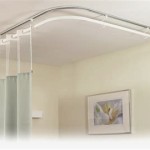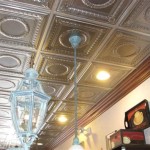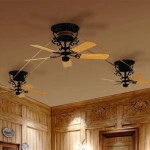A Guide To Choosing The Right Ceiling Wine Rack For Kitchens
Ceiling wine racks offer a sophisticated and space-saving solution for wine storage in kitchens. Choosing the right rack involves careful consideration of several factors, including kitchen layout, aesthetic preferences, bottle capacity, and structural integrity. This guide provides comprehensive information to assist in selecting a ceiling wine rack that seamlessly integrates into the kitchen environment, enhancing both functionality and visual appeal.
The primary advantage of a ceiling wine rack is its ability to utilize otherwise unused vertical space. This is particularly beneficial in smaller kitchens where floor and counter space are limited. By suspending bottles from the ceiling, the rack minimizes clutter and maximizes available workspace. Furthermore, a well-chosen ceiling wine rack can serve as a focal point, adding a touch of elegance and sophistication to the kitchen's overall design.
Before delving into specific types, it is crucial to understand the essential considerations that underpin the selection process. These foundational aspects will ensure that the chosen wine rack not only meets storage needs but also complements the kitchen’s existing aesthetic and structural capabilities.
Assessing Kitchen Structure and Space
The initial step involves a thorough assessment of the kitchen's structural capacity. Ceiling wine racks, when fully loaded with bottles, can exert significant weight. Therefore, it is imperative to verify that the ceiling joists are capable of supporting the rack's weight plus the weight of the maximum number of bottles it is designed to hold. Consulting a structural engineer or contractor is highly recommended, especially if there are any doubts about the ceiling's load-bearing capacity.
Consider the height of the ceiling and the clearance needed beneath the rack. A rack that hangs too low can obstruct movement and create a cramped feeling. Conversely, a rack that is positioned too high may be difficult to access. Measure the available space carefully, taking into account the height of frequently used appliances and the average height of individuals using the kitchen. A general rule of thumb is to ensure at least seven feet of clearance from the floor to the bottom of the rack.
The kitchen layout also plays a crucial role. Determine the optimal location for the wine rack. Areas near the cooking zone should be avoided due to potential heat exposure, which can adversely affect the wine's quality. Ideally, the rack should be positioned away from direct sunlight and sources of vibration. Consider the proximity of the rack to the dining area or bar, if applicable, for convenient access during meal preparation or entertaining.
Light fixtures must also be taken into account. A ceiling wine rack should not obstruct existing lighting or cast shadows that interfere with task lighting. If necessary, consider incorporating supplemental lighting into the rack design to illuminate the bottles and create a visually appealing display. LED lighting is a good option due to its low heat output and energy efficiency.
Exploring Different Styles and Materials
Ceiling wine racks are available in a wide array of styles and materials, each offering distinct aesthetic and functional characteristics. The choice of style should align with the kitchen's overall design theme, whether it is modern, traditional, rustic, or industrial. The material should be durable, easy to clean, and compatible with the existing décor.
Metal wine racks, typically constructed from wrought iron, stainless steel, or powder-coated steel, offer a sleek and modern aesthetic. They are known for their durability and resistance to corrosion, making them suitable for kitchens with high humidity. Metal racks can be customized with various finishes and designs, including geometric patterns, minimalist lines, and ornate scrollwork.
Wood wine racks, often made from oak, pine, or mahogany, provide a warmer and more traditional look. Wood racks can be stained or painted to match the kitchen cabinetry or left in their natural state for a rustic appeal. Wood is a naturally insulating material, which can help maintain a consistent temperature for the wine. However, it is crucial to treat the wood to prevent moisture damage and warping.
Rope and wood combinations offer a unique and eclectic aesthetic. These racks typically feature wooden shelves or bottle holders suspended from the ceiling by thick ropes. This style is well-suited for kitchens with a nautical or bohemian theme. The rope adds a textural element, while the wood provides stability and support.
Glass and metal combinations provide a contemporary and minimalist look. These racks often feature glass shelves or dividers supported by a metal frame. The glass allows light to pass through, creating a visually open and airy feel. This style is ideal for kitchens with a modern or minimalist design.
The style and material also influence the ease of cleaning and maintenance. Metal and glass racks are generally easier to clean than wood racks, as they are less susceptible to staining and moisture damage. Wood racks may require periodic sealing or refinishing to maintain their appearance and protect them from the elements.
Determining Bottle Capacity and Configuration
The capacity of the wine rack should be determined by the individual's wine collection and storage needs. Consider the current number of bottles and the anticipated growth of the collection. It is generally advisable to choose a rack that can accommodate more bottles than are currently owned, providing room for future acquisitions.
The configuration of the rack also plays a crucial role in its functionality and visual appeal. Wine racks are available in various configurations, including horizontal, vertical, and angled orientations. Horizontal racks allow for proper wine storage, keeping the cork moist and preventing it from drying out and crumbling. Vertical racks are more space-efficient but may not be ideal for long-term storage. Angled racks offer a compromise between space efficiency and cork preservation.
The size and shape of the bottles must also be considered. Some wine racks are designed to accommodate standard-sized bottles, while others can accommodate larger or unusually shaped bottles. If the wine collection includes a variety of bottle sizes, choose a rack that is versatile enough to accommodate different dimensions.
Spacing between bottles is another important factor. Adequate spacing allows for easy access to individual bottles without disturbing others. It also promotes air circulation, which helps maintain a consistent temperature and prevent the buildup of moisture. A general rule of thumb is to allow at least one inch of space between bottles.
Consider the ease of access and retrieval. A well-designed wine rack should allow for easy access to individual bottles without requiring excessive reaching or straining. The bottles should be securely held in place to prevent them from falling or breaking. If the rack is positioned high above the floor, consider using a step stool or ladder to access the upper shelves.
Ultimately, the ideal bottle capacity and configuration will depend on individual needs and preferences. Carefully evaluate the size of the wine collection, the space available, and the desired level of accessibility to make an informed decision.
Beyond these core considerations, additional elements can further refine the selection process. These encompass aspects that enhance the rack's overall functionality and aesthetic integration within the kitchen environment.
Ensure that the chosen ceiling wine rack includes all necessary mounting hardware and instructions. Proper installation is crucial for safety and stability. If unsure about the installation process, it is best to hire a professional installer to ensure that the rack is securely mounted to the ceiling joists.
Consider the overall aesthetic of the wine rack and how it complements the kitchen's existing décor. Choose a style and material that aligns with the kitchen's color scheme, cabinetry, and other design elements. A well-chosen wine rack can enhance the kitchen's visual appeal and create a cohesive and stylish look.
Examine customer reviews and ratings before making a purchase. This can provide valuable insights into the quality, durability, and ease of installation of the wine rack. Look for reviews that mention specific features or concerns that are relevant to individual needs and preferences.
Compare prices from different retailers to ensure that you are getting the best value for your money. Consider the cost of the wine rack itself, as well as any additional costs associated with installation or accessories. Be wary of excessively low prices, as they may indicate inferior quality.
By carefully considering these factors, one can select a ceiling wine rack that not only meets storage needs but also enhances the beauty and functionality of the kitchen.

Amazing Kitchen Wine Rack Ideas For Your Home Designcafe

Amazing Kitchen Wine Rack Ideas For Your Home Designcafe

Kitchen Wine Cellars Storage For Racks America

Amazing Kitchen Wine Rack Ideas For Your Home Designcafe

Kitchen Drinks Storage Practical Stylish Ideas For Wine Racks Home Bars Coffee Stations And More

A Sommelier S Guide To The Best Wine Racks And Storage Systems Winetasting Com

Wine Racks For Small Spaces Cellar Hq

Wine Glass Holder Ceiling Rack Rustic Industrial Racks Wall Mounted With 8 Stem 2 Tiers Mount Bottle H By Ufurnish Com

Amazing Kitchen Wine Rack Ideas For Your Home Designcafe

Guide For Building A Custom Home Wine Cellar Hq
Related Posts








